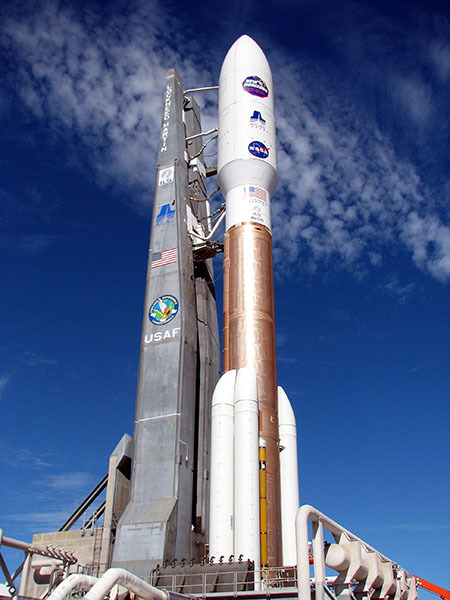The Photos That NASAHubble & NASAWebb Took Of The Pillars Of Creation Inspired Me Deeply. I Had To Draw


The photos that NASAHubble & NASAWebb took of The Pillars of Creation inspired me deeply. I had to draw what I saw in the formation: A hand reaching into the universe. What an accomplishment for humankind and what a symbol for exploration and knowledge. Credit 2nd image: NASA
More Posts from Ad-astra-affecte-spe and Others

The Sun’s corona during a solar-eclipse.

Going for a walk. Apollo 17 astronaut Ronald Evans leaves to the spacecraft to retrieve film cassettes from the Service Module, Dec 1972. Mr. Evans was Command Module Pilot & orbited the moon a record 75 times during the mission. He holds the record for most time spent in lunar orbit at just shy of 148 hours. He is the last human to orbit the moon solo. A historic figure in space pioneering.









Exploration is in our nature. We began as wanderers, and we are wanderers still.
l photo: Sara Hunt l quote: Carl Sagan
I'm having too much fun taking Skye sky photos on a cloudless winter's night. From May until the end of July it doesn't get dark enough for stars. (Pixel 5 in Night Mode / Astrophotography AI on.)




Setting Sail to Travel Through Space: 5 Things to Know about our New Mission
Our Advanced Composite Solar Sail System will launch aboard Rocket Lab’s Electron rocket from the company’s Launch Complex 1 in Māhia, New Zealand no earlier than April 23, at 6 p.m. EDT. This mission will demonstrate the use of innovative materials and structures to deploy a next-generation solar sail from a CubeSat in low Earth orbit.
Here are five things to know about this upcoming mission:
1. Sailing on Sunshine
Solar sails use the pressure of sunlight for propulsion much like sailboats harness the wind, eliminating the need for rocket fuel after the spacecraft has launched. If all goes according to plan, this technology demonstration will help us test how the solar sail shape and design work in different orbits.

2. Small Package, Big Impact
The Advanced Composite Solar Sail System spacecraft is a CubeSat the size of a microwave, but when the package inside is fully unfurled, it will measure about 860 square feet (80 square meters) which is about the size of six parking spots. Once fully deployed, it will be the biggest, functional solar sail system – capable of controlled propulsion maneuvers – to be tested in space.

3. Second NASA Solar Sail in Space
If successful, the Advanced Composite Solar Sail System will be the second NASA solar sail to deploy in space, and not only will it be much larger, but this system will also test navigation capabilities to change the spacecraft’s orbit. This will help us gather data for future missions with even larger sails.

4. BOOM: Stronger, Lighter Booms
Just like a sailboat mast supports its cloth sails, a solar sail has support beams called booms that provide structure. The Advanced Composite Solar Sail System mission’s primary objective is to deploy a new type of boom. These booms are made from flexible polymer and carbon fiber materials that are stiffer and 75% lighter than previous boom designs. They can also be flattened and rolled like a tape measure. Two booms spanning the diagonal of the square (23 feet or about 7 meters in length) could be rolled up and fit into the palm of your hand!

5. It’s a bird...it’s a plane...it’s our solar sail!
About one to two months after launch, the Advanced Composite Solar Sail System spacecraft will deploy its booms and unfurl its solar sail. Because of its large size and reflective material, the spacecraft may be visible from Earth with the naked eye if the lighting conditions and orientation are just right!
To learn more about this mission that will inform future space travel and expand our understanding of our Sun and solar system, visit https://www.nasa.gov/mission/acs3/.
Make sure to follow us on Tumblr for your regular dose of space!

2023 December 16
Crescent Enceladus Image Credit: Cassini Imaging Team, SSI, JPL, ESA, NASA
Explanation: Peering from the shadows, the Saturn-facing hemisphere of tantalizing inner moon Enceladus poses in this Cassini spacecraft image. North is up in the dramatic scene captured during November 2016 as Cassini’s camera was pointed in a nearly sunward direction about 130,000 kilometers from the moon’s bright crescent. In fact, the distant world reflects over 90 percent of the sunlight it receives, giving its surface about the same reflectivity as fresh snow. A mere 500 kilometers in diameter, Enceladus is a surprisingly active moon. Data and images collected during Cassini’s flybys have revealed water vapor and ice grains spewing from south polar geysers and evidence of an ocean of liquid water hidden beneath the moon’s icy crust.
∞ Source: apod.nasa.gov/apod/ap231216.html







New Horizons – Scientist of the Day
The New Horizons spacecraft, bound for Pluto, blasted off its launch pad aboard an Atlas V rocket on Jan. 19, 2006.
read more...
-
 blue-mystique reblogged this · 3 weeks ago
blue-mystique reblogged this · 3 weeks ago -
 worms-eating-people reblogged this · 3 weeks ago
worms-eating-people reblogged this · 3 weeks ago -
 frxstguardian liked this · 3 weeks ago
frxstguardian liked this · 3 weeks ago -
 siv01 liked this · 3 weeks ago
siv01 liked this · 3 weeks ago -
 mikokomi-spoils liked this · 3 weeks ago
mikokomi-spoils liked this · 3 weeks ago -
 goblinindenial liked this · 3 weeks ago
goblinindenial liked this · 3 weeks ago -
 tinkchick555 liked this · 4 weeks ago
tinkchick555 liked this · 4 weeks ago -
 blackjack-15 reblogged this · 4 weeks ago
blackjack-15 reblogged this · 4 weeks ago -
 golurkkoopa reblogged this · 4 weeks ago
golurkkoopa reblogged this · 4 weeks ago -
 blue14dragon liked this · 4 weeks ago
blue14dragon liked this · 4 weeks ago -
 renrood reblogged this · 4 weeks ago
renrood reblogged this · 4 weeks ago -
 mightbeadragon liked this · 4 weeks ago
mightbeadragon liked this · 4 weeks ago -
 amber-in-the-rough liked this · 4 weeks ago
amber-in-the-rough liked this · 4 weeks ago -
 hiddensun reblogged this · 4 weeks ago
hiddensun reblogged this · 4 weeks ago -
 starkerluftballon reblogged this · 4 weeks ago
starkerluftballon reblogged this · 4 weeks ago -
 thejosiebird reblogged this · 4 weeks ago
thejosiebird reblogged this · 4 weeks ago -
 thejosiebird liked this · 4 weeks ago
thejosiebird liked this · 4 weeks ago -
 livid-silver liked this · 4 weeks ago
livid-silver liked this · 4 weeks ago -
 twitchynibbles liked this · 4 weeks ago
twitchynibbles liked this · 4 weeks ago -
 winddotgif liked this · 4 weeks ago
winddotgif liked this · 4 weeks ago -
 daengeli reblogged this · 4 weeks ago
daengeli reblogged this · 4 weeks ago -
 daengeli liked this · 4 weeks ago
daengeli liked this · 4 weeks ago -
 steelbluehome liked this · 4 weeks ago
steelbluehome liked this · 4 weeks ago -
 bmd2-sn7f reblogged this · 4 weeks ago
bmd2-sn7f reblogged this · 4 weeks ago -
 willowtrees-06 reblogged this · 4 weeks ago
willowtrees-06 reblogged this · 4 weeks ago -
 conxo liked this · 4 weeks ago
conxo liked this · 4 weeks ago -
 queercosmogony reblogged this · 4 weeks ago
queercosmogony reblogged this · 4 weeks ago -
 nevertakebuttsforgranted liked this · 4 weeks ago
nevertakebuttsforgranted liked this · 4 weeks ago -
 feuangfa reblogged this · 4 weeks ago
feuangfa reblogged this · 4 weeks ago -
 feuangfa liked this · 4 weeks ago
feuangfa liked this · 4 weeks ago -
 allatorguard reblogged this · 4 weeks ago
allatorguard reblogged this · 4 weeks ago -
 allatorguard liked this · 4 weeks ago
allatorguard liked this · 4 weeks ago -
 havzic liked this · 4 weeks ago
havzic liked this · 4 weeks ago -
 katrito liked this · 4 weeks ago
katrito liked this · 4 weeks ago -
 nabaath-areng liked this · 4 weeks ago
nabaath-areng liked this · 4 weeks ago -
 neopessimiste reblogged this · 4 weeks ago
neopessimiste reblogged this · 4 weeks ago -
 sarenraegalpaladin reblogged this · 4 weeks ago
sarenraegalpaladin reblogged this · 4 weeks ago -
 bestlittlesnek liked this · 4 weeks ago
bestlittlesnek liked this · 4 weeks ago -
 coffeefromthevoid reblogged this · 4 weeks ago
coffeefromthevoid reblogged this · 4 weeks ago -
 coffeefromthevoid liked this · 4 weeks ago
coffeefromthevoid liked this · 4 weeks ago -
 osbornelius reblogged this · 4 weeks ago
osbornelius reblogged this · 4 weeks ago -
 osbornelius liked this · 4 weeks ago
osbornelius liked this · 4 weeks ago -
 cerebrobullet reblogged this · 4 weeks ago
cerebrobullet reblogged this · 4 weeks ago -
 spyhunter705 liked this · 4 weeks ago
spyhunter705 liked this · 4 weeks ago -
 battlecry51 liked this · 1 month ago
battlecry51 liked this · 1 month ago -
 mostly-void-partly-stars reblogged this · 1 month ago
mostly-void-partly-stars reblogged this · 1 month ago -
 charmed-redemption liked this · 1 month ago
charmed-redemption liked this · 1 month ago -
 darkcrowprincess reblogged this · 1 month ago
darkcrowprincess reblogged this · 1 month ago -
 razette reblogged this · 1 month ago
razette reblogged this · 1 month ago

★•Astronomy, Physics, and Aerospace•★ Original and Reblogged Content curated by a NASA Solar System Ambassador
204 posts


